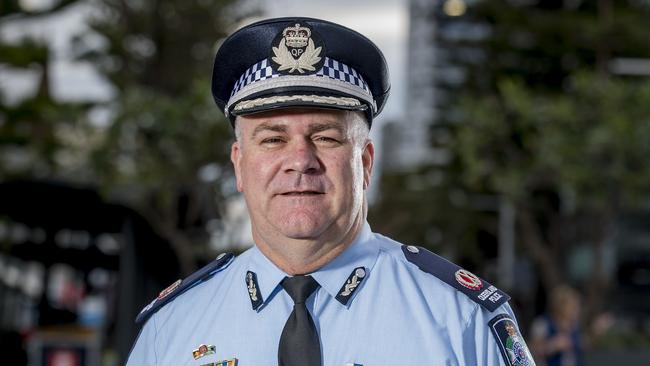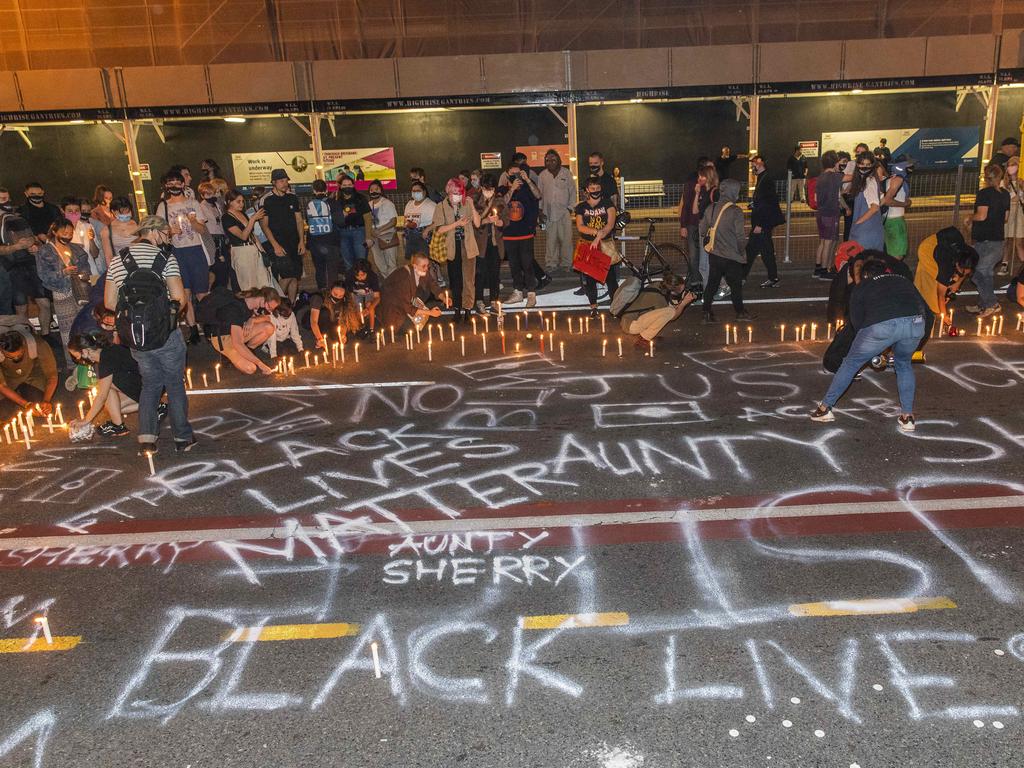Officer suspended after death in Brisbane watch-house
A Queensland Police Service watch-house officer has been suspended from duty following the death of a 49-year-old woman in custody in Brisbane earlier this month.

Police & Courts
Don't miss out on the headlines from Police & Courts. Followed categories will be added to My News.
The Queensland Police Service has suspended an assistant watch-house officer from duty following the death in custody of 49-year-old Sherry Fisher-Tilberoo.
Addressing the media this afternoon, Assistant Commissioner Brian Codd said the investigations remain ongoing by the Crime and Corruption Commission, however the Service had taken immediate action after Ms Tilberoo died of natural causes while under police guard.
Police say woman found dead in Brisbane watchhouse died of natural causes
Police investigate woman’s death in Brisbane watchhouse
“This suspension relates to allegations of failure of duty in relation to the performance of regular physical checks on prisoners in the watch-house, and related record keeping,” Assistant Commissioner Codd said.
“QPS has taken immediate steps on this occasion due to the seriousness of this issue and obviously due to the sensitivities surrounding it.”
Ms Tilberoo died of natural causes in the Brisbane watch house last week. Her death has sparked a number of protests in Brisbane’s CBD.

As a result of the incident, Police Commissioner Katarina Carroll has directed for an immediate overview of the watch-house processes, which will be conducted by a senior superintendent of police.
The officer will step into the role of State Custody Officer and will review watch-house practices, including the length of time people stay in police watch house custody.

“We have protocols in the watch-house that various levels of physical checking is done in various cells depending on the risk profile of the individual,” Assistant Commissioner Codd said.
He said Ms Tilberoo was classed at a “normal” level of risk.
According to Assistant Commissioner Codd, someone classed in that category of risk would usually receive hourly physical checks.
The assistant watch-house officer has been on leave since Ms Tilberoo’s death and was suspended today.
She is not a sworn police officer, but works for the Queensland Police Service “under a different regime”.
Mr Codd said there was a period between midnight and 6am where the assistant watch-house officer allegedly failed to check on Ms Tilberoo.
He said Ms Tilberoo was assessed as being of “normal risk threshold” – and should have been physically checked hourly.
“The fact that Ms Tilberoo may have died of natural causes is still of concern, given our responsibilities for people that remain in our custody,” he said.
“My understanding is that the last known movement of Ms Tilberoo was somewhere about the midnight mark, or somewhere after midnight.

“She was located deceased shortly after 6am.
“So there’s a period of somewhere between five and six hours that we’re talking about where the issue around the appropriate combination of viewing what’s occurring in cells from CCTV footage is married up with protocols around the physical checking that happens in cells – and that’s the matter that is under particular scrutiny.
“And the advice that was provided to us … warranted taking the action that we have today.”
Mr Codd said hourly checks involved looking for signs of life without disturbing a prisoners sleep.
“The normal protocols in that regard would involve usually hourly physical checks,” he said.
“That check would involve going to the external part of the cell, looking from the cell door, looking for obvious signs of life, for instance, the rising of the chest in breath.
“And sometimes that involves using a torch in lowlight conditions … and that’s the nature of the circumstances we’ve got some concerns about.”
Mr Codd said the State Custody Officer “will be tasked to immediately conduct a full review of watch-houses, with a particular focus on issues, such as the length of time people stay in police custody, particularly before they might transfer to a correctional facility,” he said.
“And better visibility around health records and health backgrounds to individuals that may well be held in custody.”


